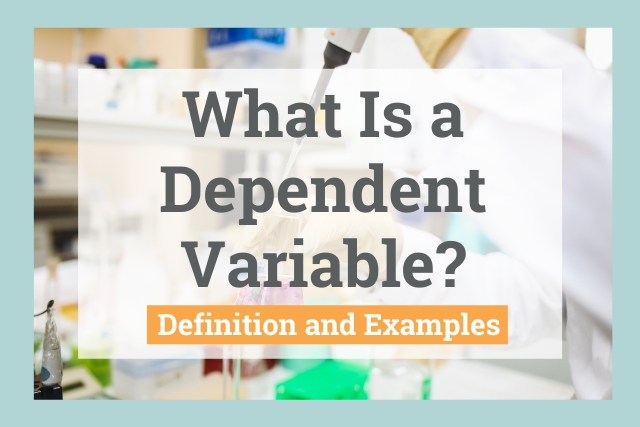
Independent and dependent variables might bring up vague memories of your high school science class. But if you’ve forgotten what exactly a dependent variable is, or you get confused between independent and dependent variables, we've got you covered.
Today, we’ll break down exactly what a dependent variable is, how to identify it in a study, and look at some examples of dependent variables. So put on your lab coat, grab your goggles, and get ready to learn everything you need to know about dependent variables.
- What Is a Dependent Variable?
- What Is the Difference Between an Independent Variable and a Dependent Variable?
- How Do You Identify the Dependent Variable?
- What Are Some Examples of Dependent Variables?
- What Is the Dependent Variable in Other Types of Studies?
- Why Do I Need to Know Independent and Dependent Variables?
What Is a Dependent Variable?
It doesn’t matter whether you’re conducting a sociology survey or doing an experiment in a lab. Dependent and independent variables have the same role in any sort of study.
To truly understand dependent variables, we first need to know how to tell the difference between independent and dependent variables.
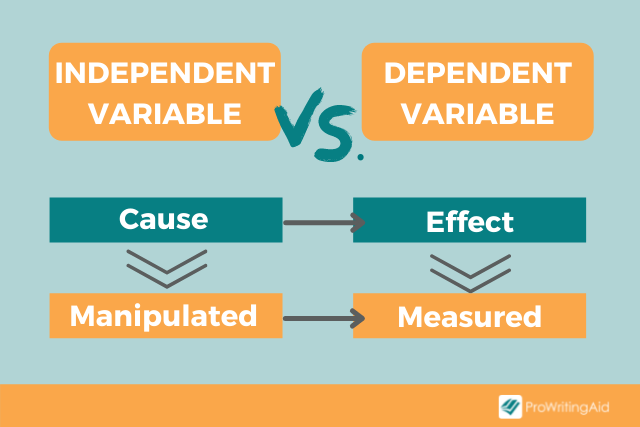
In the simplest terms, an independent variable is the cause, and the dependent variable is the effect. But it can be hard to figure out which is which when you’re looking at any sort of study or experiment.
What Is the Difference Between an Independent Variable and a Dependent Variable?
Although they serve the same function in any type of study, independent variables can look different depending on whether you’re conducting an experiment or surveying and observing. This, in turn, makes it harder to identify dependent variables.
If you’re conducting an experiment, the independent variable is the condition or factor you manipulate to see an effect. The dependent variable is the outcome of the manipulation.
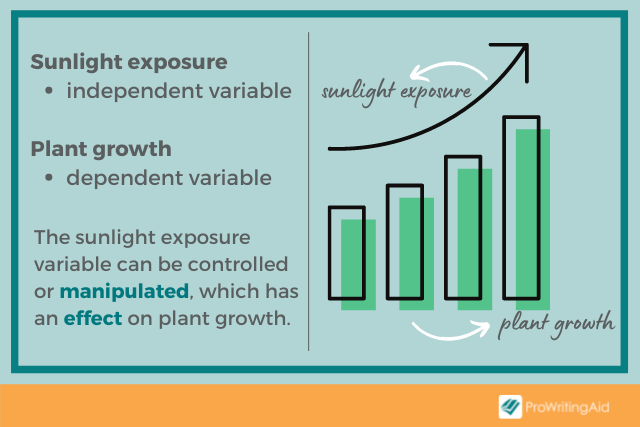
For example, if you are measuring how the amount of sunlight affects the growth of a type of plant, the independent variable is the amount of sunlight. You can control how much sunlight each plant gets. The growth is the dependent variable. It is the effect of the amount of sunlight.
In some types of research, it’s not possible to manipulate a factor, so the researchers must determine the independent variable they are studying in order to measure outcomes. If you’re conducting a study like this, you must ask which variable affects the other variables. The one that has an effect is the independent variable, and the effects are the dependent variables.
For example, you might be curious if a person’s level of education affects their health later in life. The level of education is the independent variable. Their healthiness is the dependent variable. Of course, these types of studies often have more than one independent variable. It’s important to account for other factors that can influence your dependent variable.
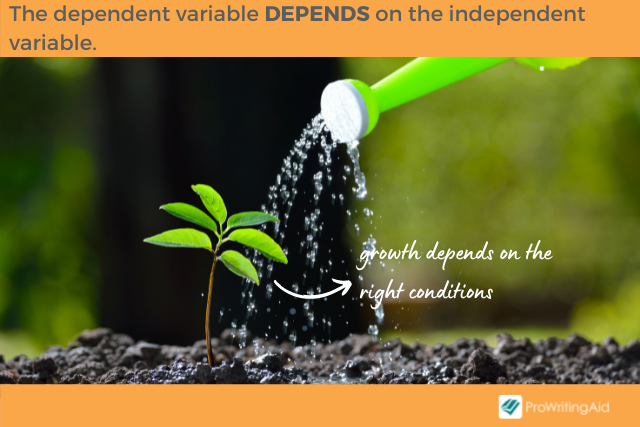
How Do You Identify the Dependent Variable?
If you’re reading about a study or experiment, you’ll want to identify the independent and dependent variables. It can help to find the independent variable first if you’re researching an experiment. What factor did the researchers manipulate or control? That is the independent variable.
Dependent variables might also be referred to as the outcome variable or the response variable. Look for the outcome or the effect. That’s your dependent variable.
But with some studies, it might not be so simple, especially when there are many other variables at play. Returning to our education and health example, other factors that affect health can include genetics, socioeconomic status, geographic location, and more.
To identify the dependent variable in a study, ask yourself which factor is an effect of the other factors. A dependent variable depends on the independent variables.
In our example, level of health depends on many factors or independent variables. That makes level of health the dependent variable.
Always ask yourself which variable depends on another or which variable is an effect to find the dependent variable in any study.

What Are Some Examples of Dependent Variables?
Let’s put our knowledge to the test with some examples. We will look at some different types of studies and identify both the independent variable and dependent variable.
What Is the Dependent Variable in an Experiment?
Scientific experiments rely on different variables. Here are a couple of hypothetical examples.
A group of doctors wants to study how stress affects heart rate. They design an experiment to test the heart rates of different individuals in different situations. They show stressful images to some groups and do increasingly difficult physical tasks for other groups.
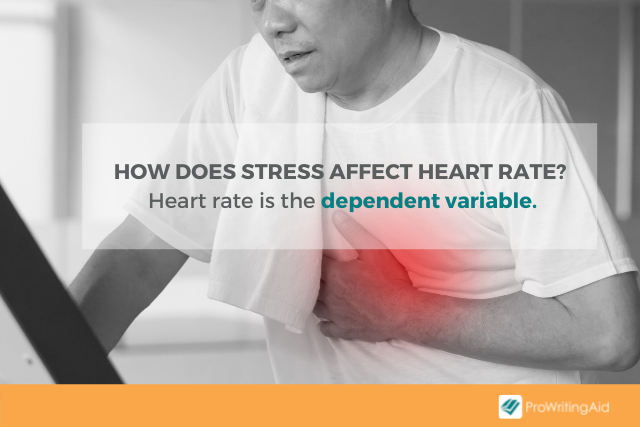
In this situation, they are manipulating stress level, which makes stress the independent variable. The dependent variable would be heart rate because it results from stress.
Scientists want to know how well different methods of treating municipal water supplies work. Their experiment uses different methods of treating the water and measuring levels of dangerous chemicals in the water after treatment. The manipulated variable is the method used for treating water. This is the independent variable. That means the dependent variable is the levels of different chemicals in the water supply.
A dog food company promises that their food will increase dental health. A group of veterinarians decide to test this claim. They look at the dog food that their patients eat and document their dental health over a few years, only to find no evidence to support the brand’s claim. The dog food is the variable that is easy to manipulate, so it’s the independent variable. Dental health is the dependent variable.
What Is the Dependent Variable in Other Types of Studies?
Sometimes research isn’t an experiment. It’s measuring observations. Let’s look at some examples. These are all hypothetical studies.
New research is released that suggests companies can keep their employees longer if they offer shorter work weeks. The companies with shorter work weeks have less turnover in their staffing, while companies that require more hours have higher rates of employees quitting. The rate of employees quitting depends on the length of the work week, so it’s the dependent variable. That means the length of the work week, which is something that companies can adjust, is the independent variable.
A city wanted to decrease the high amount of motor vehicle accidents each year. They examined the data from all of these crashes and found that the areas with more access to public transportation had fewer crashes. Areas that did not have good access to public transit had more vehicle accidents. In this case, crashes are a result of differential access to public transit, which makes the number of accidents the dependent variable. Access to public transit is the independent variable.
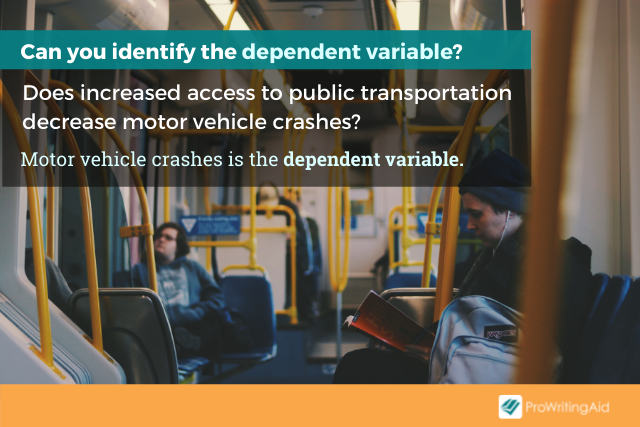
Sociologists want to know how the minimum wage can affect rates of non-violent crime. They study rates of crime in areas with different minimum wages. They also compare the crime rates to previous years when the minimum wage was lower. The minimum wage is the variable that is affecting crime rates, so it’s the independent variable. Crime rates are the dependent variable.
Why Do I Need to Know Independent and Dependent Variables?
You might not be a scientist or sociologist, so why do you need to know how to identify the variables in studies?
With scientific advancement, claims of miracle cures, and divisive public policy debates, it’s important to understand how to look at facts and research critically. The first step to understanding research is identifying the independent and dependent variables. Then you can ask critical questions about how a study was conducted to draw your own conclusions from the results.
If you're defining variables for your own report, make sure that your structure fits the academic style of writing necessary. ProWritingAid lets you change your document type so it better suits your writing needs.
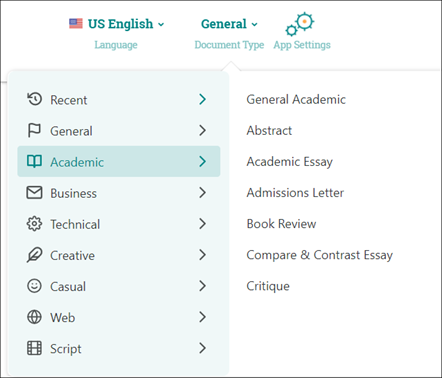
Try it today with a free ProWritingAid account.



